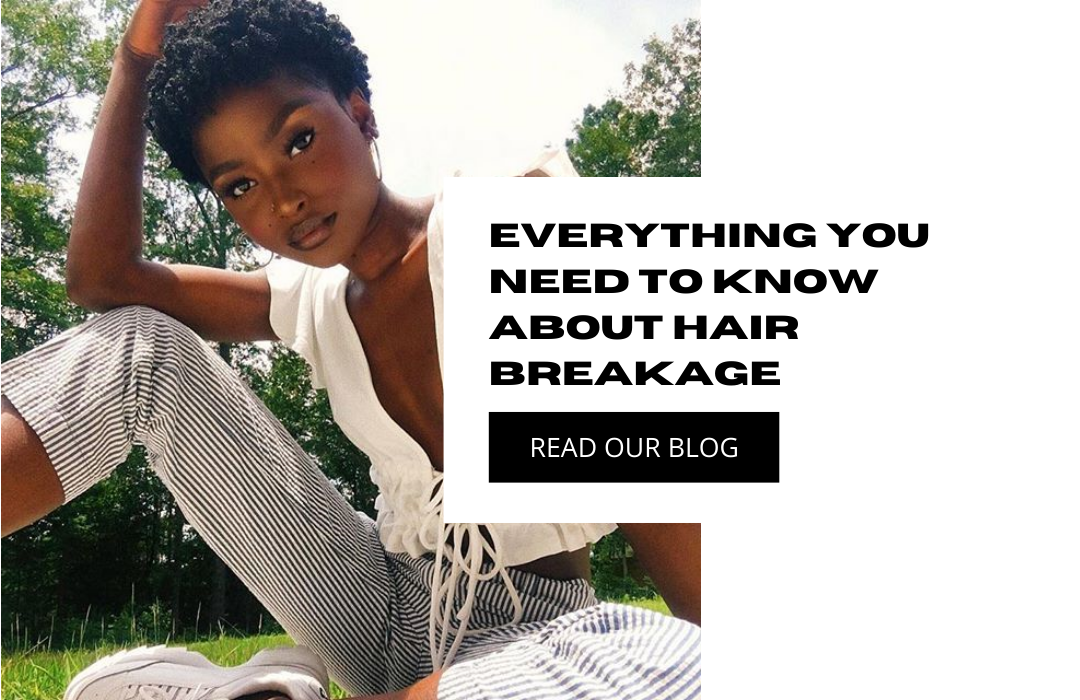
Everything you need to know about breakage
Share
The term 'breakage' is used a lot within the natural hair community. If you've ever wondered what it means, you've come to the right place. Today, we're breaking it down (no pun intended !)
Simply put, here are all the key things you need to know about breakage.
Firstly, let's start by defining what we mean by 'breakage'.
Hair breakage refers to the structural damage which causes your hair strands to snap and break off. This can occur as a result of a number of reasons. It is typically experienced when you leave split ends to continue splitting up your hair shaft, you handle your hair roughly, you're experiencing damage from the use of chemical treatments which can be too harsh and drying such as colour dyes and relaxers. Other reasons include, poor diet, stress, high manipulation hairstyles, a lack of hydration which makes your strands dry and brittle. As a result of that your strands loose elasticity and bounce making it more prone to break off.
Now that we know what breakage is, and we've glossed over some of the key causes for hair breaking off, it's time to know how to fix it!
The good news is that a number of these causes of hair breakage can be fixed by changing our hair styling habits.
Careful with heat
If you frequently use heat in your hair, making an effort to minimise damage might look like using an effective heat protectant, reducing the amount of times you apply heat, sticking to the manufacturers guide on how to use the heat tool and finally ensuring that you're using an appropriate level of heat.
Reduce hair friction
This could be your ends rubbing on your clothing, or the fibres of your towel or on your cotton pillowcase. Try wearing your hair up in buns or incorporate hairstyles that protect the ends of your hair. Many naturals opt for t-shirt only to dry their hair after washing it. You can also invest in a nice microfibre towel turban which is super absorbent without removing all the moisture from your hair. Another way to minimise hair friction could be to use satin pillowcases, scarfs or bonnets to protect your kinks, curls and coils during the night.
Reduce hair tension
This could be tension on your edges from wearing extensions which are heavy and pull on the hairs on your hair line. Or perhaps you have your hair braided too tightly which causes tension and pulls your hair off. Knotless braids are wonderfully lightweight and so won't weigh your hair down.
When brushing or combing your hair, do so gently to reduce unnecessary tension on your hair. Many naturals adopt hair detangling techniques which ease the detangling process and result in less hair breakage. Ensure your hair has enough slip (from a conditioner or oil) if you're brushing on wet hair. Whilst it is more common to comb wet over dry hair, we recommend to avoid detangling on dripping wet hair or excessively dry hair. At both of these extremes, your hair is very fragile and prone to breakage.
Reconstructing treatments
If your hair is severely damaged as a result of overdyeing or harsh chemical relaxers, you may want to consider treatments such as Olaplex which are specifically designed to repair the broken bonds in the hair. Treatments like this can help you to manage your damaged hair. We recommend that you use them to grow out your damaged ends and when you are comfortable with the length of your new growth you can then trim off the hair that was damaged. This is perfect for people who aren't necessarily ready to chop off all their damaged hair at the first instance especially if it's a lot that's got to go. But hey, more power to you if you do!
Hopefully, you've learnt all the basic things you need to know about hair breakage and a few tips on how to fix it if you are currently experiencing it!
Don’t miss out on more tips and real stories from myself and our Mane Babes! To learn more you can join the conversation by following us on Instagram - @Mercysmane!
As always sis,
Stay blessed X
